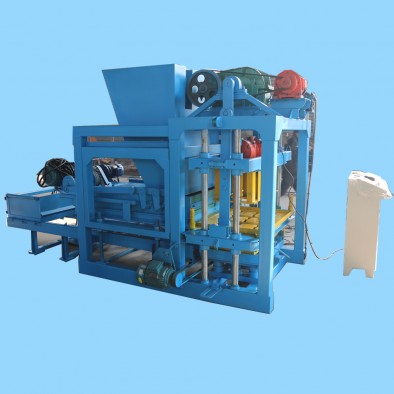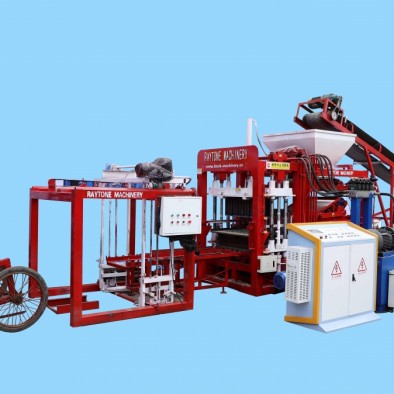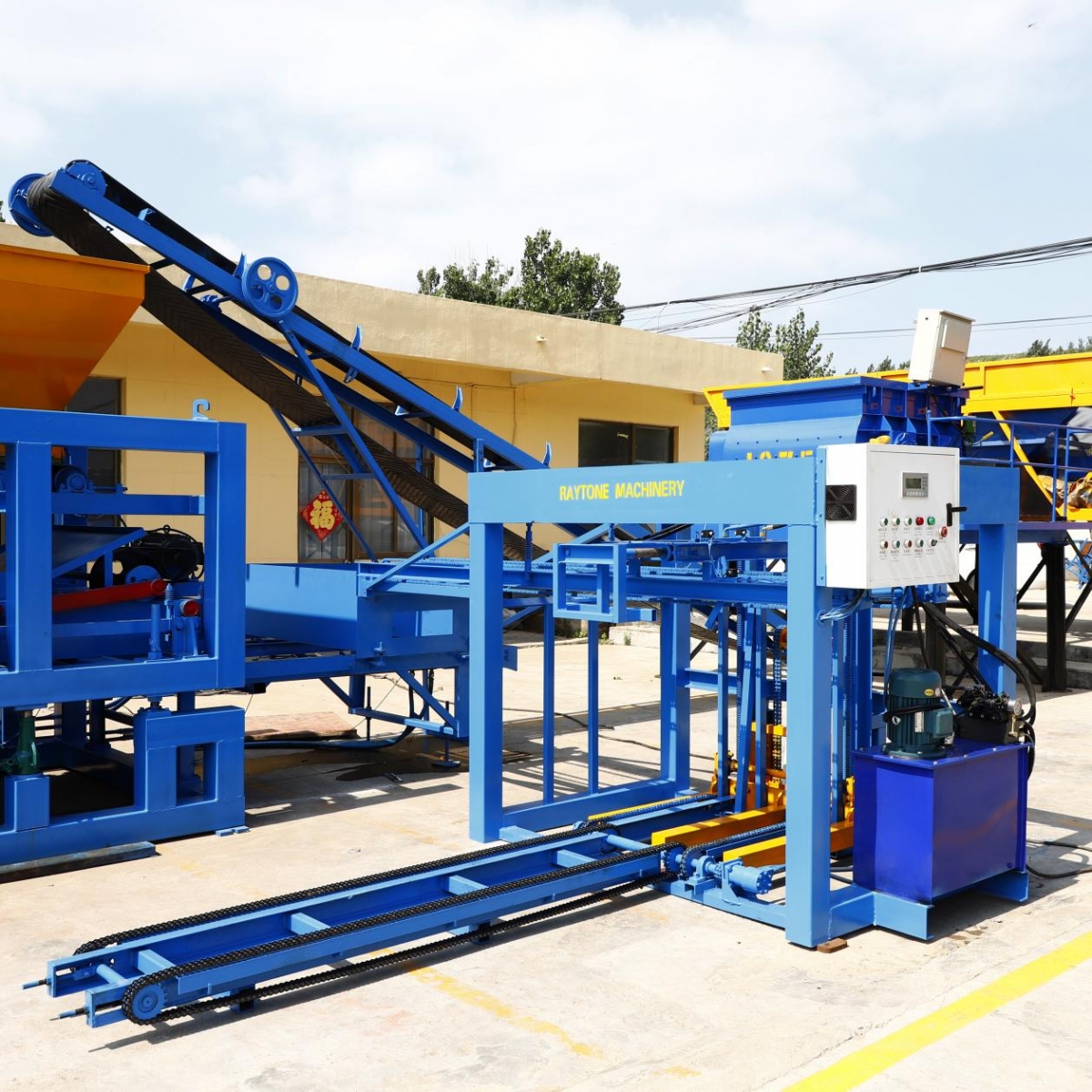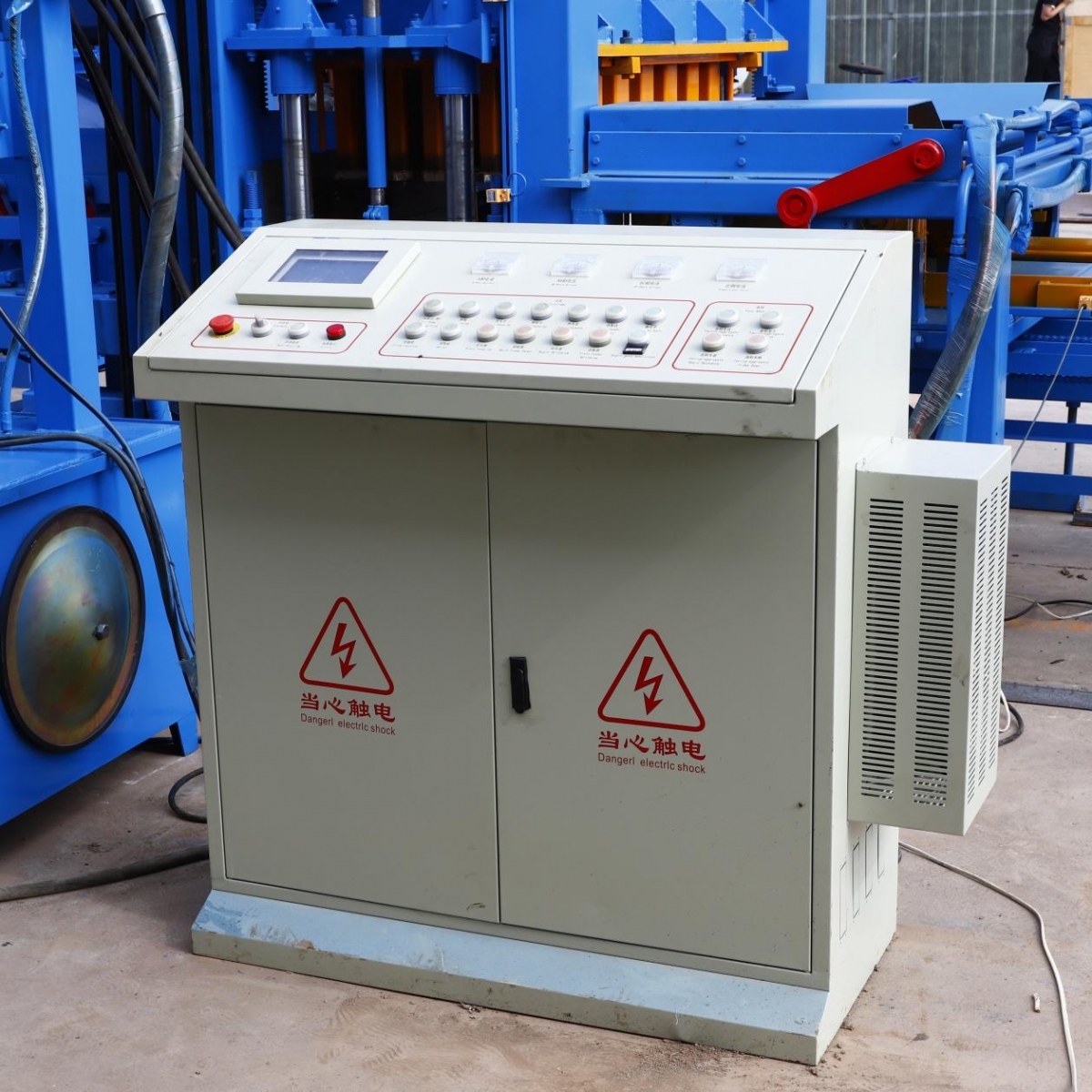- 28
- Feb
Can a block making machine create different types of blocks?
RAYTONE is a leading manufacturer and supplier of block making machines in the construction industry. We specialize in the production and distribution of high-quality block making machines, including manual, automatic, and hydraulic models, catering to the needs of our clients worldwide. Our products not only meet the industry standards but also exceed our customers’ expectations in terms of quality, efficiency, and versatility.
Our block making machines are designed to produce high-quality and uniform blocks, bricks, and pavers for various construction projects. We use premium quality materials and advanced manufacturing techniques in the production of our machines, ensuring excellent performance and longevity. Our manual block making machines are compact and easy to operate, making them suitable for small-scale production. They are ideal for manufacturing traditional clay or concrete bricks, which are widely used for building walls, fences, and pavements.
In addition to our standard machines, we also offer customized solutions to meet the specific requirements of our clients. Our team of experienced engineers and technicians work closely with customers to understand their needs and design tailored solutions that are efficient and cost-effective.

At our company, we understand the importance of productivity in any production process. That’s why we have developed a cutting-edge block machine that streamlines your production and optimizes your output. With advanced technology and precision engineering, our machine is able to efficiently and effectively produce high-quality blocks, saving you time and resources. Along with its speed and accuracy, our block machine also offers customizable features to meet your specific production needs. Trust us to maximize your productivity with our state-of-the-art block machine.
Craftsmanship and technology have often been viewed as opposing forces, with one valuing handiwork and the other prioritizing efficiency. However, in our block machine, we have found the perfect balance between the two. Our machine embodies the principles of traditional craftsmanship, utilizing precision engineering and expert manual labor, while also incorporating cutting-edge technology for enhanced productivity and quality control.

Block making machine, also known as brick making machine, is a device that produces concrete blocks or bricks in various shapes and sizes. It plays an important role in the construction industry by providing a cost-effective and efficient solution for producing building materials. With the advancement of technology and the increasing demand for sustainable building materials, block making machines have evolved to become more versatile and eco-friendly. In this article, we will delve deeper into the functionalities and benefits of block making machines and explore how they have revolutionized the way we build structures.
2.Is a block making machine easy to operate and maintain?
3.What is the working principle of a block making machine?
4.What is the expected lifespan of a block making machine?
5.What measures are taken to ensure the structural integrity of the blocks produced by the machine?
6.What materials can be used in a block making machine?
7.How does the block making machine handle uneven or irregularly shaped raw materials?
8.How does the block making machine handle the release of the finished blocks?
9.Does a block making machine require a specific type of raw materials for optimal production?
10.What is the cost of purchasing and operating a block making machine?
11.What is the difference between a fully automatic and semi-automatic block making machine?
1.Can a block making machine be used for large-scale production?
Yes, a block making machine can be used for large-scale production. These machines are designed to produce a high volume of blocks in a short amount of time, making them ideal for large-scale production. They are also highly efficient and can produce consistent and high-quality blocks, making them a cost-effective option for large-scale production. Additionally, many block making machines can be customized to meet the specific needs and requirements of a large-scale production operation.
2.Is a block making machine easy to operate and maintain?
Yes, a block making machine is relatively easy to operate and maintain. Most modern block making machines come with user-friendly controls and instructions, making it easy for operators to learn and operate the machine. Additionally, regular maintenance and cleaning of the machine can help prolong its lifespan and ensure smooth operation. However, it is important to follow the manufacturer’s instructions and guidelines for proper maintenance and operation of the machine.
3.What is the working principle of a block making machine?
The working principle of a block making machine involves the use of a mold or a die to shape and compress raw materials such as cement, sand, and water into solid blocks. The machine typically consists of a hopper, a mixing chamber, a hydraulic system, and a conveyor belt.
1. Mixing: The raw materials are first mixed in the hopper to create a homogenous mixture. This mixture is then transferred to the mixing chamber.
2. Compression: The mixture is then fed into the mold or die, which is then compressed by a hydraulic system. The pressure applied by the hydraulic system helps to compact the mixture and remove any air pockets, resulting in a solid block.
3. Ejection: Once the block is formed, it is ejected from the mold and placed on a conveyor belt for further processing.
4. Curing: The blocks are then cured in a curing chamber, where they are exposed to heat and moisture to strengthen and harden.
5. Stacking and packaging: After curing, the blocks are stacked and packaged for storage or transportation.
The entire process is automated and controlled by a computerized system, ensuring consistent and precise production of high-quality blocks.
4.What is the expected lifespan of a block making machine?
The expected lifespan of a block making machine can vary depending on factors such as the quality of the machine, frequency of use, and maintenance. However, on average, a well-maintained block making machine can last for 10-15 years.
5.What measures are taken to ensure the structural integrity of the blocks produced by the machine?
1. Quality Control: The blocks produced by the machine undergo strict quality control measures to ensure their structural integrity. This includes regular testing of the blocks for strength, durability, and dimensional accuracy.
2. Use of High-Quality Materials: The machine is designed to use high-quality materials such as cement, sand, and aggregates to produce strong and durable blocks. These materials are carefully selected and tested to meet the required standards.
3. Proper Maintenance: Regular maintenance of the machine is essential to ensure its proper functioning and to prevent any structural defects in the blocks. This includes cleaning, lubrication, and replacement of worn-out parts.
4. Calibration: The machine is calibrated regularly to ensure that it is producing blocks of the desired size and strength. This helps to maintain consistency in the quality of the blocks.
5. Proper Mixing: The machine is designed to mix the materials in the correct proportions to ensure the strength and durability of the blocks. Improper mixing can result in weak and unstable blocks.
6. Reinforcement: In some cases, reinforcement such as steel bars or fibers may be added to the blocks to increase their strength and prevent cracking.
7. Curing: The blocks are cured properly after production to allow them to gain strength and stability. This process involves keeping the blocks moist and protected from extreme temperatures.
8. Compliance with Building Codes: The machine and the blocks produced must comply with local building codes and standards to ensure their structural integrity.
9. Regular Inspections: The blocks produced by the machine are regularly inspected to identify any defects or weaknesses. This allows for timely repairs or replacements to maintain the structural integrity of the blocks.
10. Training and Certification: The operators of the machine are trained and certified to ensure that they are using the machine correctly and producing high-quality blocks. This helps to prevent any human error that could compromise the structural integrity of the blocks.

6.What materials can be used in a block making machine?
1. Concrete: This is the most commonly used material in block making machines. It is a mixture of cement, sand, gravel, and water that hardens into a strong and durable material.
2. Fly ash: This is a byproduct of coal combustion and is often used as a substitute for cement in block making. It is a cost-effective and environmentally friendly option.
3. Clay: Clay blocks are made from a mixture of clay and water, which is then compressed and fired in a kiln. They are known for their strength and durability.
4. Sand: Sand is often used as a filler material in block making. It helps to reduce the cost of production and can improve the thermal and acoustic properties of the blocks.
5. Lime: Lime is a binding agent that is often used in combination with other materials such as sand and fly ash to make blocks. It helps to improve the strength and durability of the blocks.
6. Gypsum: Gypsum is a mineral that is used as a binding agent in block making. It helps to improve the workability and strength of the blocks.
7. Plastic: Some block making machines can also use plastic as a raw material. Recycled plastic can be melted and molded into blocks, making it an environmentally friendly option.
8. Wood: In some cases, wood chips or sawdust can be used as a filler material in block making. This is a cost-effective option and can also improve the insulation properties of the blocks.
9. Glass: Crushed glass can be used as a filler material in block making. It is a sustainable option and can also improve the thermal and acoustic properties of the blocks.
10. Rubber: Some block making machines can also use rubber as a raw material. Recycled rubber can be mixed with other materials to make durable and flexible blocks.
7.How does the block making machine handle uneven or irregularly shaped raw materials?
The block making machine is designed to handle uneven or irregularly shaped raw materials in the following ways:
1. Adjustable Molds: The molds used in the block making machine can be adjusted to accommodate different sizes and shapes of raw materials. This allows for flexibility in the production process and ensures that the blocks are of uniform size and shape.
2. Vibrating Table: The block making machine is equipped with a vibrating table that helps to settle the raw materials evenly in the mold. This ensures that the blocks have a smooth and even surface, regardless of the shape of the raw materials.
3. Hydraulic Pressure: The block making machine uses hydraulic pressure to compress the raw materials into the desired shape and size. This pressure can be adjusted according to the type and shape of the raw materials, ensuring that the blocks are properly formed.
4. Cutting Mechanism: Some block making machines are equipped with a cutting mechanism that can trim the edges of the blocks to make them more uniform in shape. This is especially useful for irregularly shaped raw materials.
5. Manual Adjustment: In some cases, the operator may need to manually adjust the raw materials to ensure they are properly aligned in the mold. This can be done by hand or with the help of tools provided with the machine.
Overall, the block making machine is designed to handle a variety of raw materials, including uneven or irregularly shaped ones. With its adjustable molds, vibrating table, hydraulic pressure, cutting mechanism, and manual adjustment options, it can produce high-quality blocks regardless of the shape of the raw materials.
8.How does the block making machine handle the release of the finished blocks?
The block making machine typically has a release mechanism that is activated once the blocks are fully formed and hardened. This can vary depending on the type of machine, but some common methods include:
1. Hydraulic Release: In this method, the machine uses hydraulic pressure to release the blocks from the mold. Once the blocks are fully formed, the hydraulic pressure is released, and the blocks are pushed out of the mold onto a conveyor belt or pallet.
2. Pneumatic Release: Similar to hydraulic release, this method uses compressed air to release the blocks from the mold. The air pressure is released, and the blocks are pushed out of the mold onto a conveyor belt or pallet.
3. Mechanical Release: Some machines use a mechanical release mechanism, such as a lever or crank, to release the blocks from the mold. Once the blocks are fully formed, the operator manually activates the release mechanism, and the blocks are pushed out of the mold.
4. Vibrating Release: In this method, the machine uses vibration to loosen the blocks from the mold. Once the blocks are fully formed, the machine vibrates, causing the blocks to fall out of the mold onto a conveyor belt or pallet.
After the blocks are released from the mold, they are typically transported to a curing area where they are left to harden and dry before being stacked or packaged for shipping.
9.Does a block making machine require a specific type of raw materials for optimal production?
Yes, a block making machine requires specific types of raw materials for optimal production. The most common raw materials used in block making machines are cement, sand, gravel, and water. However, the specific type and ratio of these materials may vary depending on the type of blocks being produced and the desired strength and quality of the blocks. For example, for making concrete blocks, the ideal ratio of cement to sand to gravel is 1:2:4, while for making interlocking blocks, the ratio may be different. It is important to follow the manufacturer’s guidelines and use high-quality raw materials to ensure optimal production and quality of the blocks.
10.What is the cost of purchasing and operating a block making machine?
The cost of purchasing and operating a block making machine can vary depending on factors such as the type and size of the machine, the brand, and the location of purchase. Generally, a basic manual block making machine can cost anywhere from $1000 to $5000, while a semi-automatic or fully automatic machine can cost anywhere from $5000 to $20,000 or more.
In addition to the initial purchase cost, there are also operating costs to consider. These can include the cost of raw materials such as cement, sand, and gravel, as well as the cost of electricity, maintenance, and labor. The exact cost of operating a block making machine will depend on the production volume and efficiency of the machine.
It is important to also factor in the cost of transportation and installation of the machine, as well as any additional accessories or tools that may be needed for operation.
Overall, the cost of purchasing and operating a block making machine can range from a few thousand dollars to tens of thousands of dollars, depending on the specific machine and production needs. It is important to carefully research and compare different options to find the best fit for your budget and production requirements.

11.What is the difference between a fully automatic and semi-automatic block making machine?
A fully automatic block making machine is a machine that can operate without any human intervention. It can automatically mix, mold, and stack the blocks without the need for manual labor. It is equipped with advanced technology and sensors that can control the entire process.
On the other hand, a semi-automatic block making machine requires some level of human intervention. It can perform some tasks automatically, such as mixing and molding, but it still requires manual labor for other tasks, such as stacking the blocks. It is less advanced and relies on manual control for certain functions.
